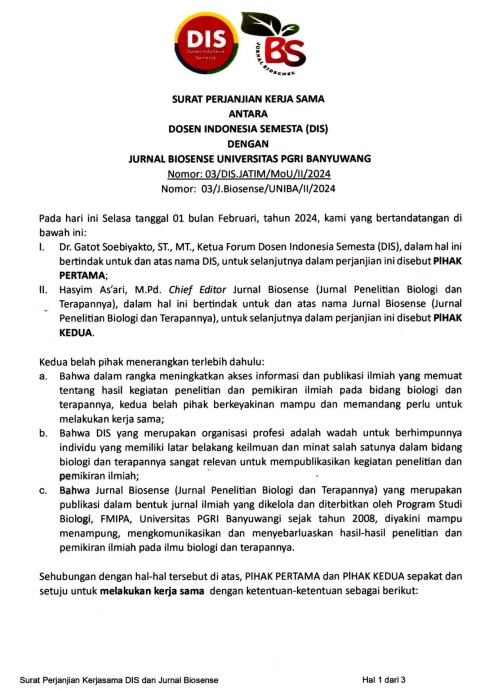MORFOMETRI KEPITING BAKAU (Scylla paramamosain) DI KAWASAN MANGROVE PANTAI PULAU SANTEN BANYUWANGI
DOI:
https://doi.org/10.36526/biosense.v7i01.3849Keywords:
morphometric, Scylla paramamosain, mangrove, Santen Island.Abstract
Mangrove crab (Scylla paramamosain) is one of crab species that live in mangrove area. The purpose of this research was to obtain the morphometric and alometric of mangrove crab in mangrove area in santen island Banyuwangi. The sample of this research were taken by used transek methode by divide the area in to 3 stations. The first station was located in upper course of mangrove, the second station in down stream of mangrove, and the third station in the middle of mangrove zone. This research was measure about carapac length (CL), carapac width (CW), abdoment leng (AL), abdoment width (AW), hand bite length (HBL), hand bite width (HBW), frontal length (FL), and frontal width (FW). The alometric was observed about relation of morphometric measurement and bodymass in female and male of crab. The result of this research showed 3 species from all of the stations. But the focus of measurement was in one species called Scylla paramamosain. The result of male morphometric measurement minimal CL: 6,5 cm, CW: 8,5 cm, AL: 4 cm, AW: 1,5 cm, HBL: 10 cm, HBW: 1,5 cm, FL: 1 cm, FW: 2 cm, Body mass: 200 gram. Maximum CL: 9 cm, CW: 10 cm, AL: 4 cm, AW: 2 cm, HBL: 8,25 cm, HBW: 2,75 cm, FL: 1,5 cm, FW: 3 cm, Body mass: 500 gram. Al though in female measurement minimal CL: 5 cm, CW: 7,5 cm, AL: 3 cm, AW: 2,5 cm, HBL: 2 cm, HBW: 1,5 cm, FL: 1 cm, FW: 2 cm, Body mass: 200 gram. Maximum CL: 7,5 cm, CW: 11 cm, AL: 3 cm, AW: 5 cm, HBL: 4 cm, HBW: 5 cm, FL: 2 cm, FW: 4 cm, Body mass: 300 gram. The alometric result of male crabs was 0,98, that means negative alometric because it was less than 3 point. The negative alometric also happen in female crabs. The conclusion of the measurement is produce a negative growth pattern in male and female crabs
References
Effendie, M. . (1979). Metoda Biologi Perikanan. Yayasan Dewi Sri.
Gunarto. (1987). Pemeliharaan Kepiting Bakau (Scylla serrata) pada Berbagai Tingkat Garam dalam Kondisi Laboratorium. Journal Penelitian Budidaya Pantai, 8(4), 86.
Keenan, C. (1999). Aquaculture of the Mud Crab, genus Scylla-Past, Present and Future’, in: Mud Crab Aquaculture and Biology (eds. C.P.Keenan and A. Blackshaw). ACIAR Proceeding, 78, 9–13.
Kinne, O. (1964). The Effect of temperature and salinity on marine and brackish water animal. II. Salinity and temperature salinity combinations. Oceanography and Marine Biologi Annual Review, 2, 281–339.
Nybakken, J. . (1992). Biologi Laut Suatu Pendekatan Ekologis. PT. Gramedia.
Pramudji. (2008). Mangrove di Indonesia dan upaya pengelolaannya: Orasi Pengukuhan Profesor Bidang Ekologi Laut. LIPI Press.
Queesland Departement of Primary Industries. (1989). Life cycle on the mud crab (Scylla serrata). Queesland Departement of Primary Industries Leadlet QI 84002.
Watanabe, S., & Fuseya, R. (1997). Notes on the Identification of the Species in Genus Scylla. Cancer, 6, 33–36.

















